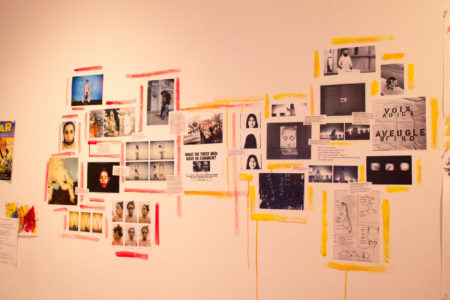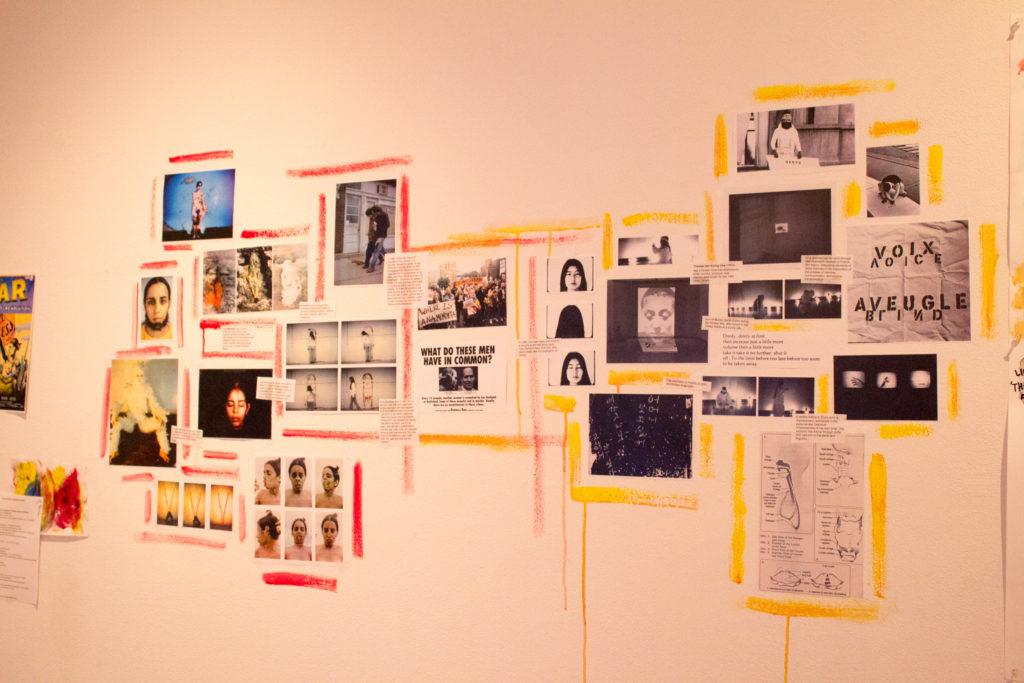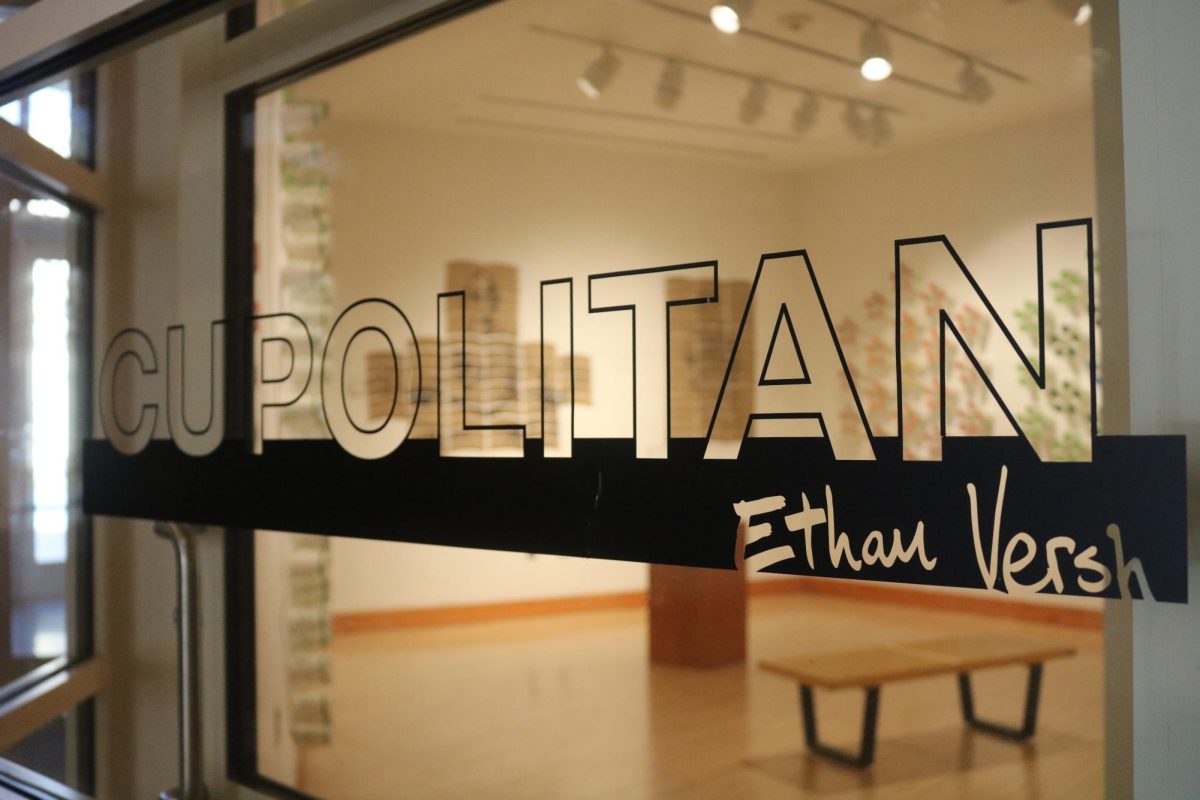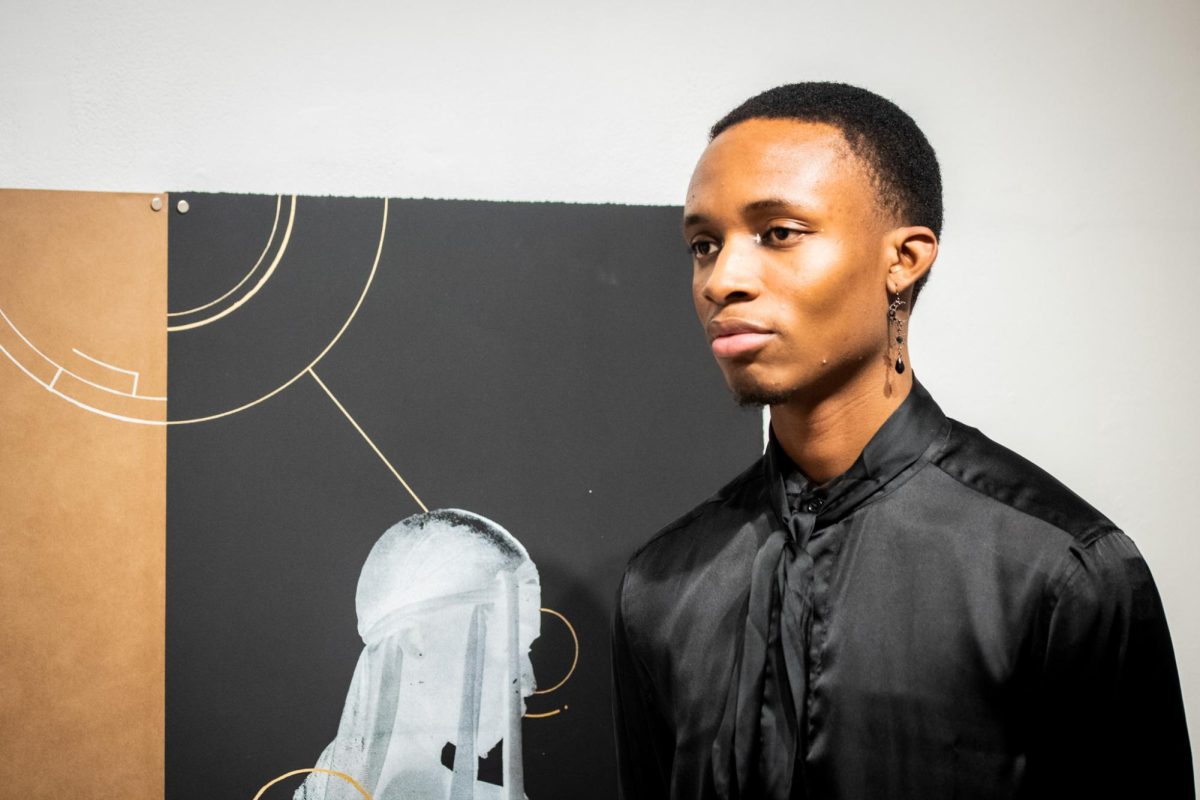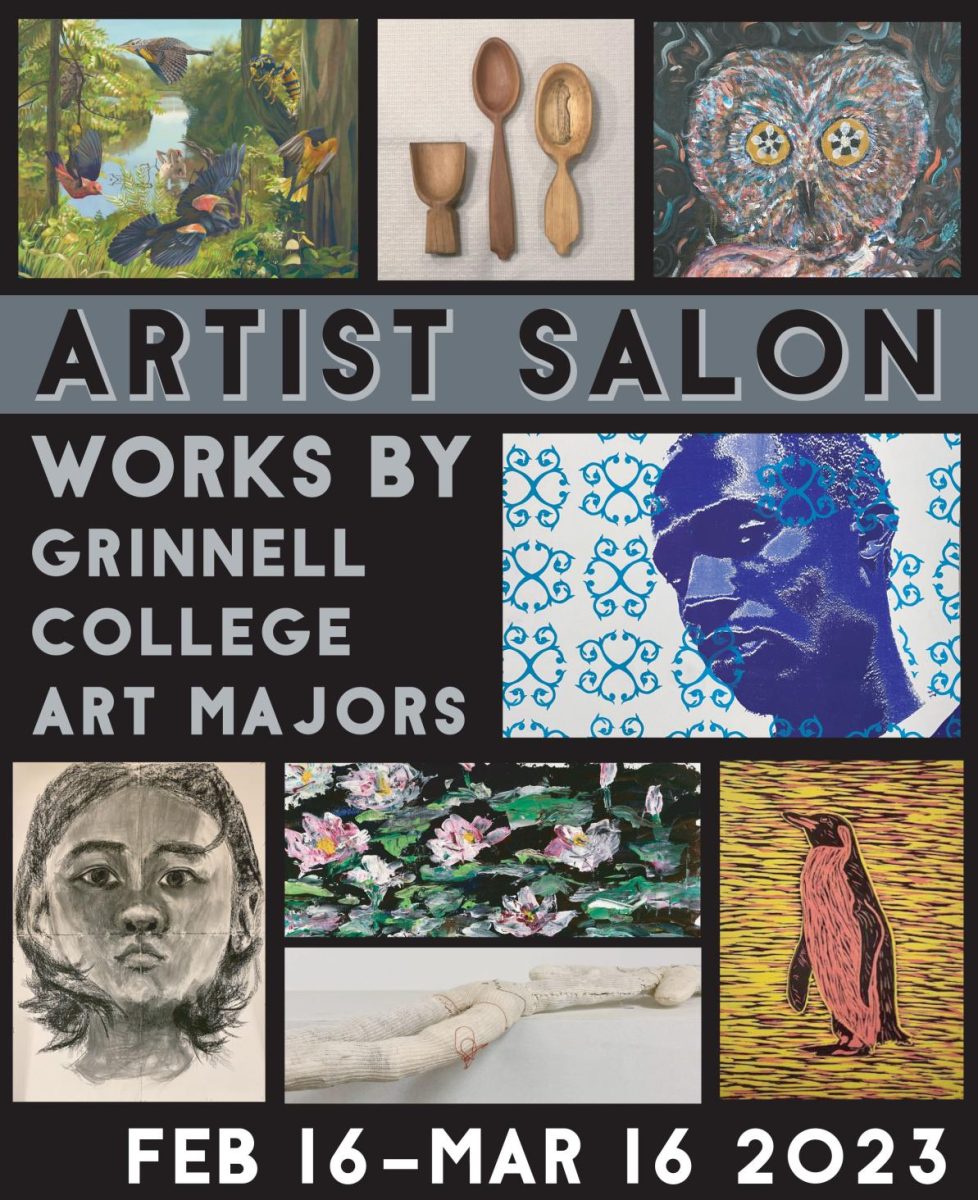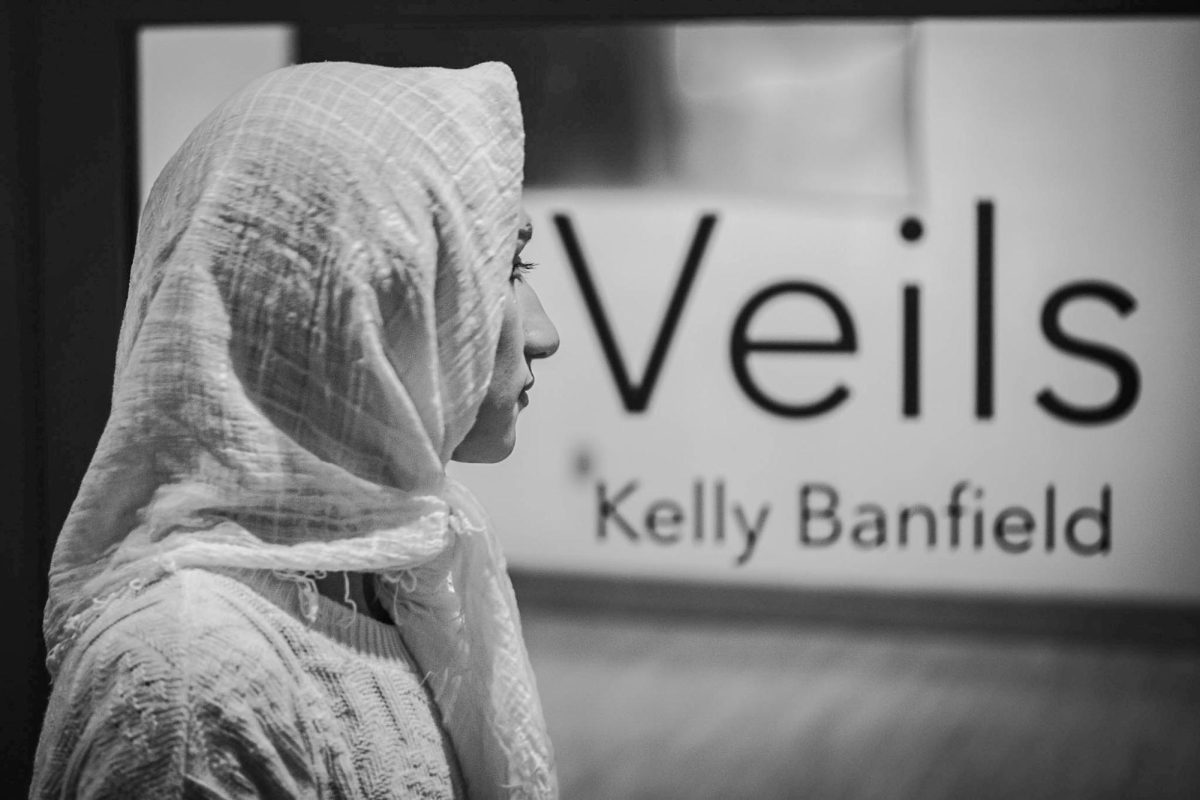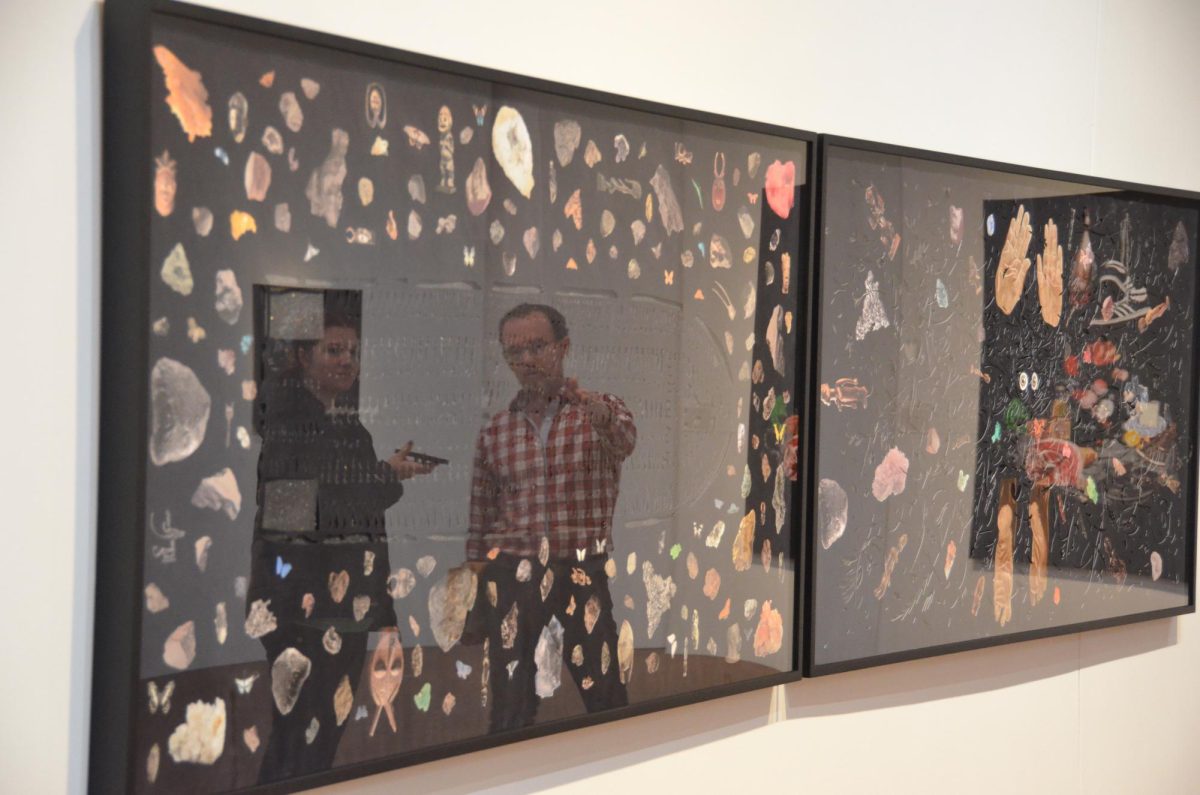Keli Vitaioli
vitaioli@grinnell.edu
This week marks the opening of one of the most transformative Smith Gallery shows of the semester. Courtsey of the ANACHA collective, the corner gallery opposite the dining hall now boasts a reading nook stocked with feminist anthologies, video explorations of relationships in the digital age, essays on Grinnell’s many shortcomings, memes, musings and more. ANACHA’s encompassing mission statement, which proclaims the collective’s goal to “deconstruct existing modes of representation within phallocentric and eurocentric logic,” greets visitors at the entrance and provides good insight into the transformative, personal journey the show hopes to take them on.
The show exhibits works from eight of the collective’s fluctuating ten to 12 members. The show encompasses work across a wide range of mediums; from memes by Teresa Fleming ’17 screaming “fuck everyone who has ever hurt me,” a video exhibit on intimacy by Halley Freger ’17 and an extensive multi-poster exhibit by the collective’s leader, Hanky Song ’17 on the seemingly never-ceasing statistics of sexual assaults on college campuses. The physical layout of the show simulates a safe space; the textures and fabrics make the gallery feel comfortable and inviting, and the content of the work exposes raw emotionality.
“The way we kind of approached this was what would a physical space of ANACHA look like, where would we convene to show our art and give each other feedback and get public feedback, and also have discussion meetings and read texts that are important to our work,” Song said.
Drawing on the collective’s mission, Smith has an extremely personal feel. Viewing the art is not a passive experience, as visitors confront the personal and political demanding to be felt. Themes of othering, drug abuse and institutional neglect, often swept aside in mainstream media, are given a platform to be considered and dissected by ANACHA’s visitors.
“We followed the women’s liberation movements and the idea that, personal is political, so kind of connecting our own unconscious forces at work when we’re making our art and contextualizing that within political structures and societal and historical processes,” Song said. “So I think, all of the pieces are, I wouldn’t say they are autobiographical, but it has a lot of the artist’s own experiences embedded within their work.”
ANACHA meets to discuss feminist, cultural and art theory, while also creating art and interpretations of the readings. The goal is to challenge traditional, Eurocentric means of thinking and creating art. The exhibit even sports a mini reading nook, allowing visitors to engage with the same readings that the collective members were inspired by.
“One of the readings that we read is [on] Race Traitor, a magazine, [by Noel Ignatiev] called “The Point is Not to Interpret Whiteness, but to Abolish it,” it was talking about how whiteness is a construction, and how it is like a club almost to exclude the other and control the material base,” Song said. “So with that reading, we kind of discussed how our relationships as different bodies of color and as women, as different marginalized people, how we are read and how we are read in relation to whiteness, and it kind of brought in our personal experiences when we were talking about that.”
While Song envisioned creating a space of open criticism, she had not imagined the strong community ANACHA would create. For Song and the members, the collective creates a space of discourse where one doesn’t exist academically on campus in the form of a major.
“It’s turned out really well, and this is one of the things that I’m really proud about in my past four years, and it has the sense of a feminist art community and because I’m an independent major and I want to pursue film making and film studies and cultural studies, because there’s a limited amount of classes that are offered here,” Song said. “It was really nice to have a space where we could meet with people who have that interest in studying cultural theory.”
The collective and the gallery highlight the works and roles of women in art where they are traditionally pushed to the side. This emphasis on female, ethnic and diverse art and theory in ANACHA’s collective does not make the collective exclusive to those with the same marginal identities — two men have joined the group.
“I’m very wary of the difficulties of ideas surrounding identity and one thing to note is that all of our members are marginalized people. If there are people that are identified as men, they are people of color, and I think the space definitely drew in those marginalized subjectivities,” Song said. “But even with [those traditionally seen as privileged], I think its important to challenge what identity means or what we are identified as. … The group is definitely not exclusive to people who identify themselves as marginalized, because there are these different levels of power that work through the very different ways we are identified.”
ANACHA’s exhibit opened on April 6 and will run through April 14. As a representative space for the group, Song does hope to hold at least one ANACHA meeting in the gallery while it is open, to give each other feedback on the work in the gallery and have a discussion meeting. The collective is always open to new members, particularly underclassmen as the group hopes to continue and more than half of the members will graduate this spring.
